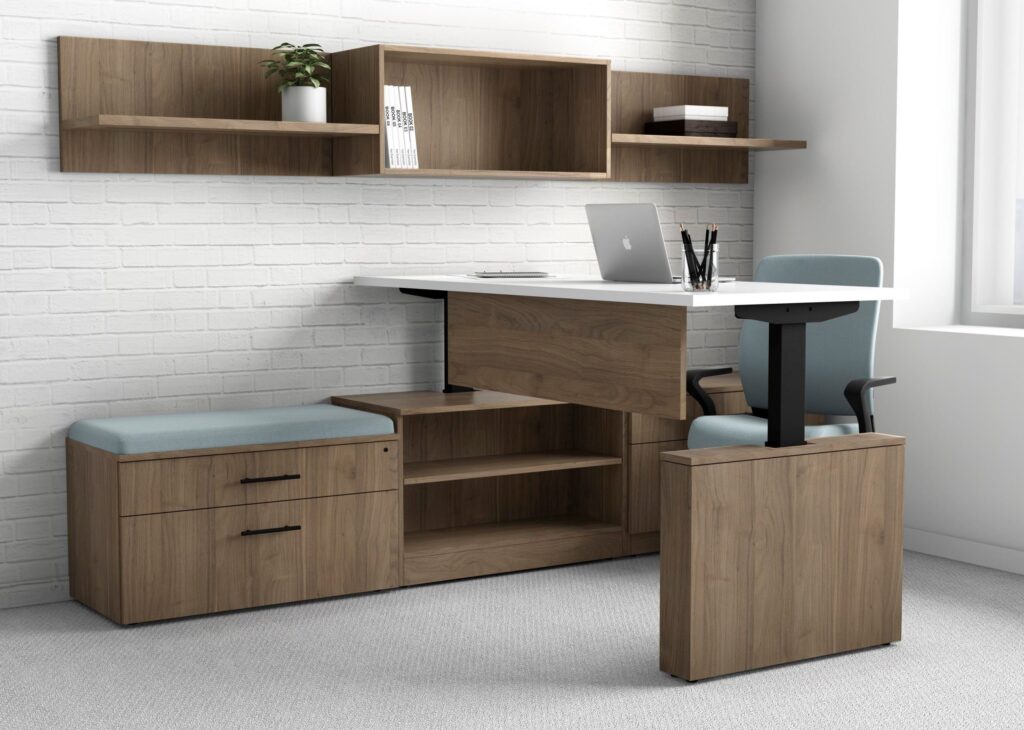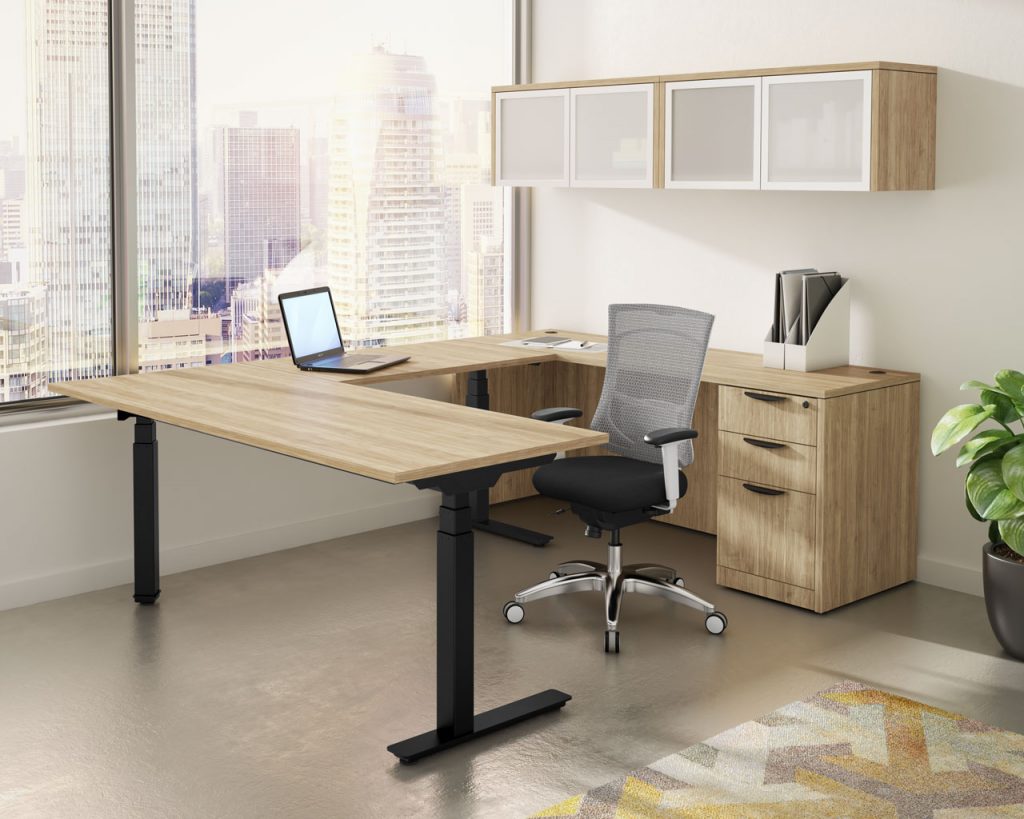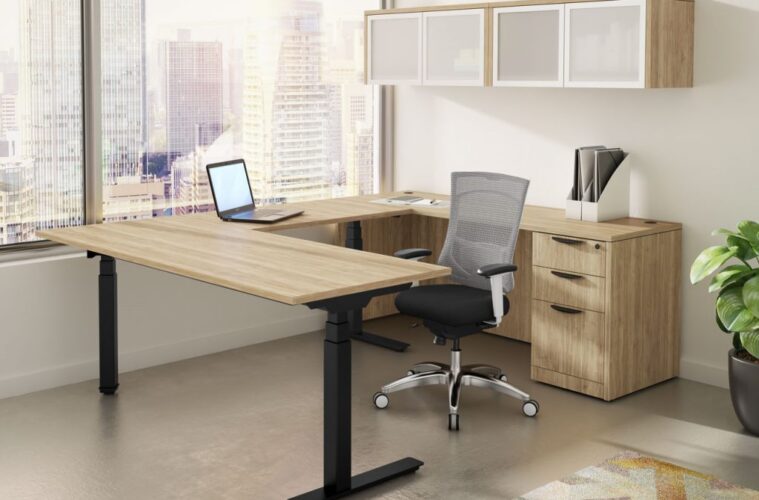In the modern office landscape, where sitting for extended periods has become the norm, the impact on our posture and overall health cannot be ignored. The introduction of adjustable-height desks has offered a promising solution to this problem. These desks allow you to customize the height to your needs, promoting better posture and a healthier work experience. In this article, we will delve into the world of adjustable height desks, exploring their benefits and how to find the perfect one for your posture.
The Importance of Posture in the Workplace:

source: pinterest.com
Maintaining proper posture while working is vital for long-term health and comfort. Prolonged periods of poor posture, such as slouching or hunching over a desk, can lead to various issues, including:
- Back and Neck Pain: Poor posture can strain the muscles and ligaments in the back and neck, leading to chronic pain and discomfort.
- Repetitive Strain Injuries: Continued incorrect posture can contribute to conditions like carpal tunnel syndrome, tendinitis, and other repetitive strain injuries.
- Reduced Productivity: Discomfort from poor posture can decrease your ability to focus and be productive, leading to a decrease in overall job performance.
- Long-Term Health Effects: Over time, poor posture can contribute to more severe health issues, including spinal deformities and musculoskeletal disorders.
The Benefits of Adjustable Height Desks:

source: pinterest.com
Adjustable height desks, also known as sit-stand desks, offer a range of benefits that directly address these posture-related issues:
- Ergonomic Support: These desks allow you to customize the height to suit your needs, promoting proper ergonomics and reducing strain.
- Variety of Positions: Adjustable height desks enable you to alternate between sitting and standing throughout the day, preventing prolonged periods of static posture.
- Improved Circulation: Shifting between sitting and standing positions promotes better blood circulation, reducing the risk of swelling and discomfort.
- Enhanced Focus and Productivity: Changing positions can boost mental alertness and concentration, improving overall job performance.
- Reduced Muscular Strain: An adjustable height desk can alleviate muscle tension in the back and neck, reducing the risk of chronic pain.
Finding the Perfect Adjustable Height Desk:
Selecting the right adjustable height desk is crucial to optimizing your posture and work experience. Here are the key factors to consider:

source: pinterest.com
- Desk Mechanism: There are two primary types of adjustable height mechanisms: manual and electric. Manual desks require physical adjustment, while electric desks offer effortless and precise height changes. Choose the instrument that suits your preferences and needs.
- Desk Range: Consider the range of height adjustment the desk offers. Some desks can accommodate a wide range of user heights, while others have more limited adjustability. Ensure the desk can be set at the correct size for both sitting and standing.
- Stability: A stable desk prevents wobbling or instability when adjusted to different heights. Look for desks with a robust and reliable frame and base.
- Work Surface: The size and material of the work surface are essential. Ensure the desk has ample space for your work tasks and is made from a material that suits your preferences, whether wood, laminate or another surface type.
- Ease of Use: Consider how easy it is to adjust the desk height. Electric desks are often effortless, while manual desks may require more physical effort.
- Additional Features: Some adjustable height desks have extra features like cable management, storage, or integrated power outlets. Choose a desk that meets your specific needs.
- Budget: Adjustable height desks come in various price ranges. Determine your budget and choose a desk that provides the features and quality you require.
Using Your Adjustable Height Desk:

source: pinterest.com
Once you’ve selected the perfect adjustable height desk, make the most of it by following these tips:
- Maintain a Neutral Posture: When sitting or standing, aim to maintain a neutral posture. Your eyes should be at the same level as your computer monitor, and your arms should form a 90-degree angle when typing.
- Alternate Positions: Stay in one position for a short time. Aim to switch between sitting and standing every 30-60 minutes to prevent static posture.
- Use Anti-Fatigue Mat: When standing, consider using an anti-fatigue mat to reduce pressure on your feet and lower limbs.
- Stay Active: Take short breaks to stretch and move around. Incorporate gentle exercises to keep your muscles engaged and reduce tension.
- Personalize Your Workspace: Customize your desk with ergonomic accessories like a keyboard tray, monitor arms, and an ergonomic chair to further support your posture.
Conclusion:
Adjustable height desks have revolutionized how we work, offering a solution to the posture-related issues that often plague office professionals. By selecting a suitable desk and following ergonomic best practices, you can significantly enhance your posture, comfort, and overall well-being in the workplace.



